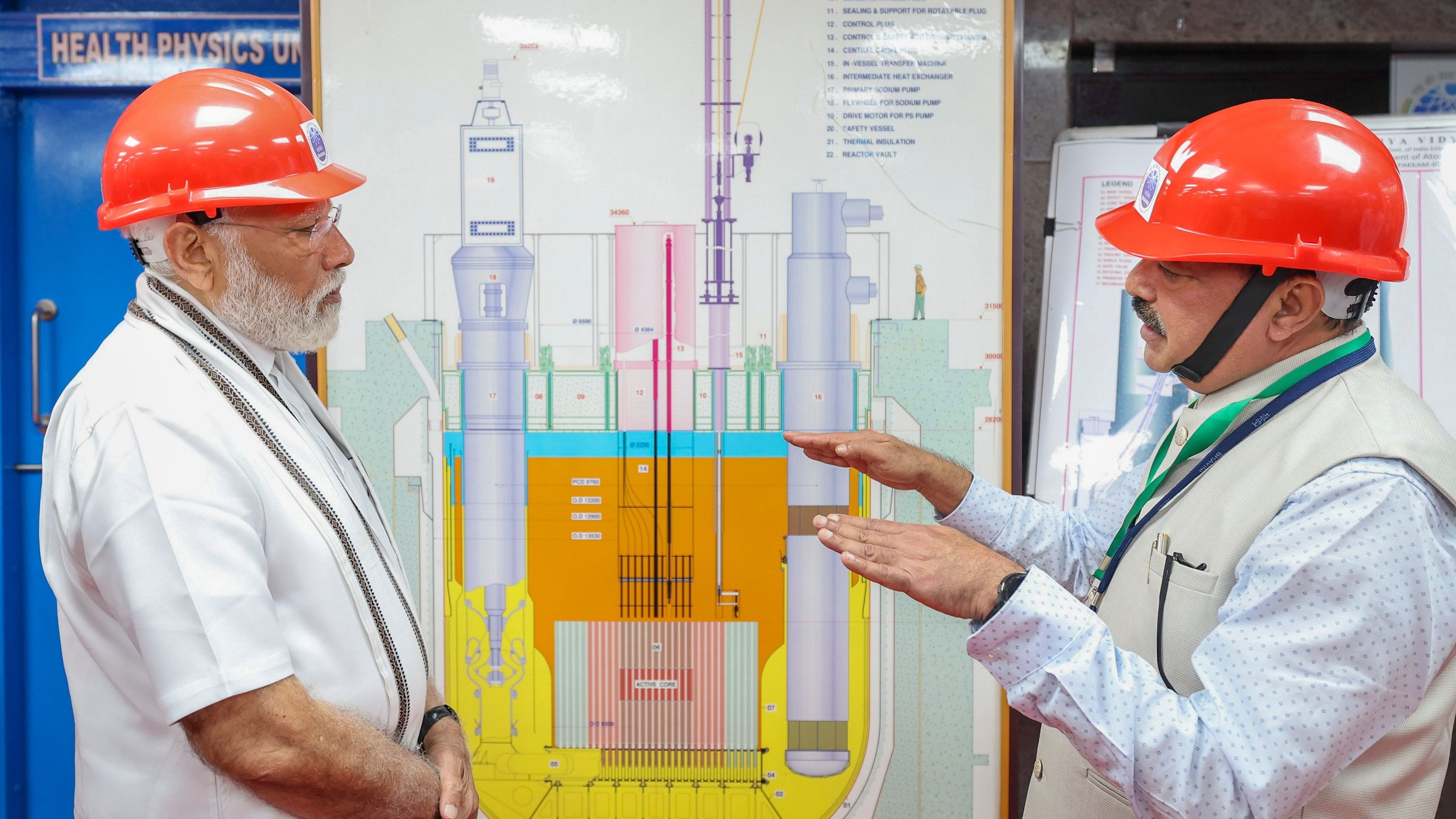
Prime Minister Narendra Modi witnesses initiation of core loading of India's indigenous Prototype Fast Breeder Reactor, at Kalpakkam in Tamil Nadu on March 4, 2024.
Credit: PTI Photo
When Prime Minister Narendra Modi witnessed the commencement of loading of fuel into the core of the Prototype Fast Breeder Reactor (PFBR) at Kalpakkam earlier this week, he witnessed the country reach a historic milestone on a journey initiated by Jawaharlal Nehru and which successive PMs continued, nurtured and expanded under trying circumstances and in the face of sanctions and technology denial by the West.
With the operationalisation of the PFBR, India has entered the second stage of its three-stage nuclear power programme, designed by the visionary Homi Bhabha in 1958. The first stage consisted in setting up Pressurised Heavy Water Reactors (PHWRs) that use uranium as fuel. The second stage consists in building ‘breeder’ reactors that use plutonium obtained from burning uranium in the PHWRs. While these reactors consume plutonium, they also ‘breed’ a little of it to fuel subsequent cycles. The third stage will involve reactors that use thorium, of which India has abundant reserves, as fuel. The PFBR itself will have a ‘blanket’ of thorium-232 that would be converted into uranium-233 for the third-stage reactors.
The decision to build the PFBR was made in 2003 by the Vajpayee government. The Manmohan Singh government saw it through even in the midst of its negotiations on the ‘nuclear deal’ with the US, as a message that India’s nuclear plans will proceed, with or without external help and despite any restrictions that may be placed on it. The US had wanted the FBR programme to be put under international safeguards, which India rebuffed. It is the result of this decades-long determined effort that PM Modi witnessed come to fruition this week. Uncharacteristically, if entirely appropriately, the Prime Minister kept it a low-key affair. The operationalisation of the PFBR has come a decade late as far as the project itself is concerned, but perhaps in the nick time in the larger scheme of things. Any further delay could well have resulted in the nuclear establishment losing scientists and engineers who have worked long years on it and all the tacit knowledge as well as industrial capabilities built up over decades. Equally importantly, a nuclear revival is underway worldwide in view of climate change. India is now well-placed to lead in this second coming of nuclear power. The government must give the go-ahead for long-standing plans for at least six more FBRs, with enhanced power outputs, as soon as the PFBR goes critical and its power output flows into the national grid.
There are many efforts in the advanced nations, especially the US, including private ones funded by billionaires, to get to thorium-based reactors directly. But India has bet that Bhabha’s plan is the optimum path to extract the full energy potential of thorium. India has the world’s third-largest thorium reserves, and on Bhabha’s path, it is estimated, enough to power India for more than 250 years. Nuclear power is essential to de-carbonising the economy.